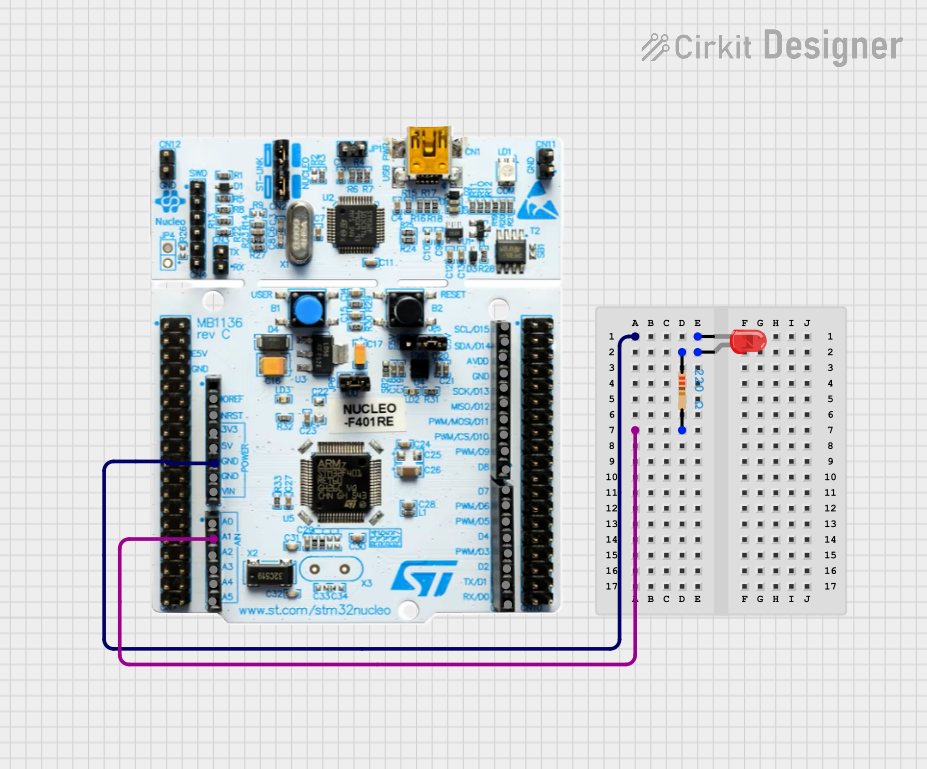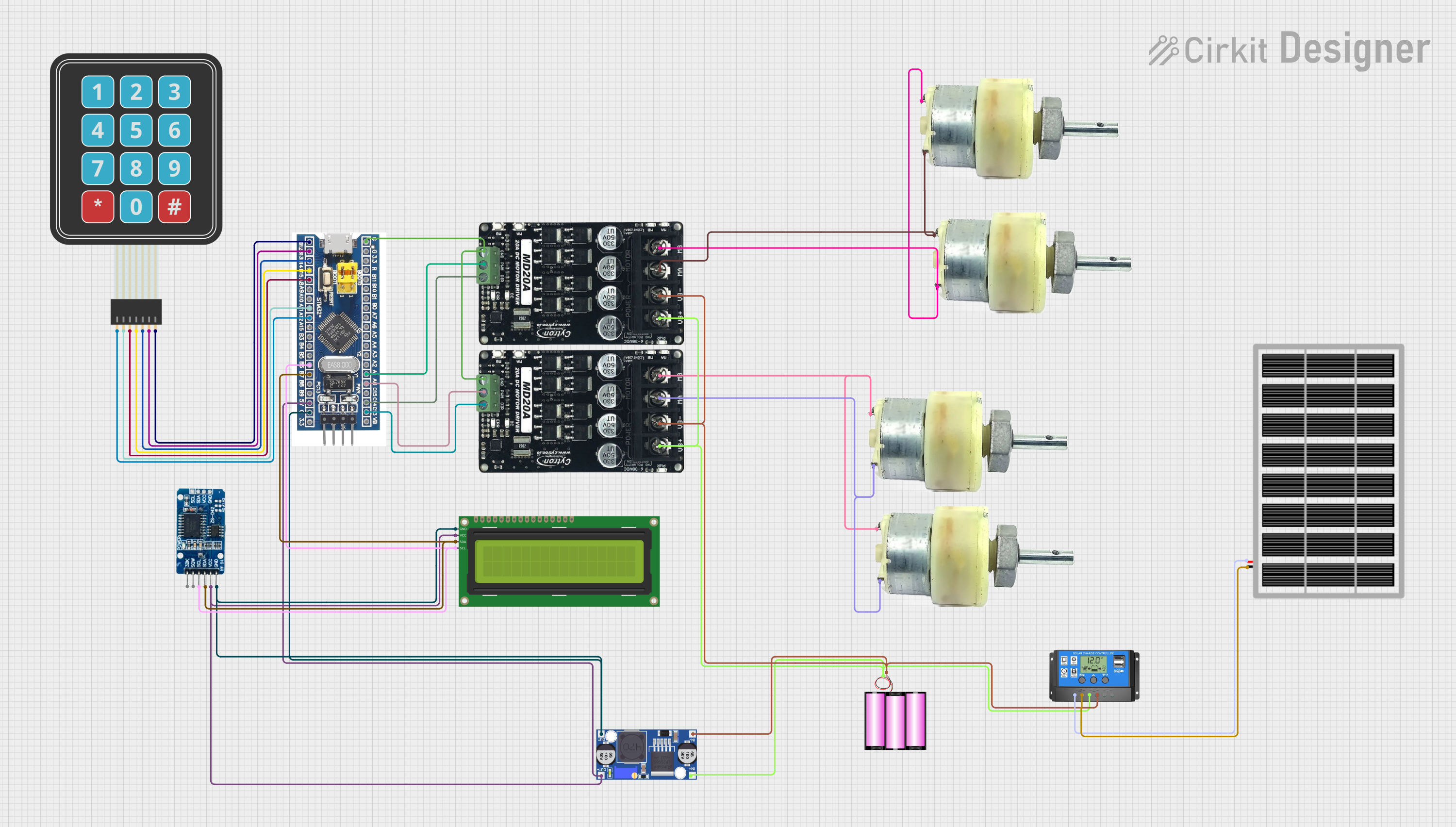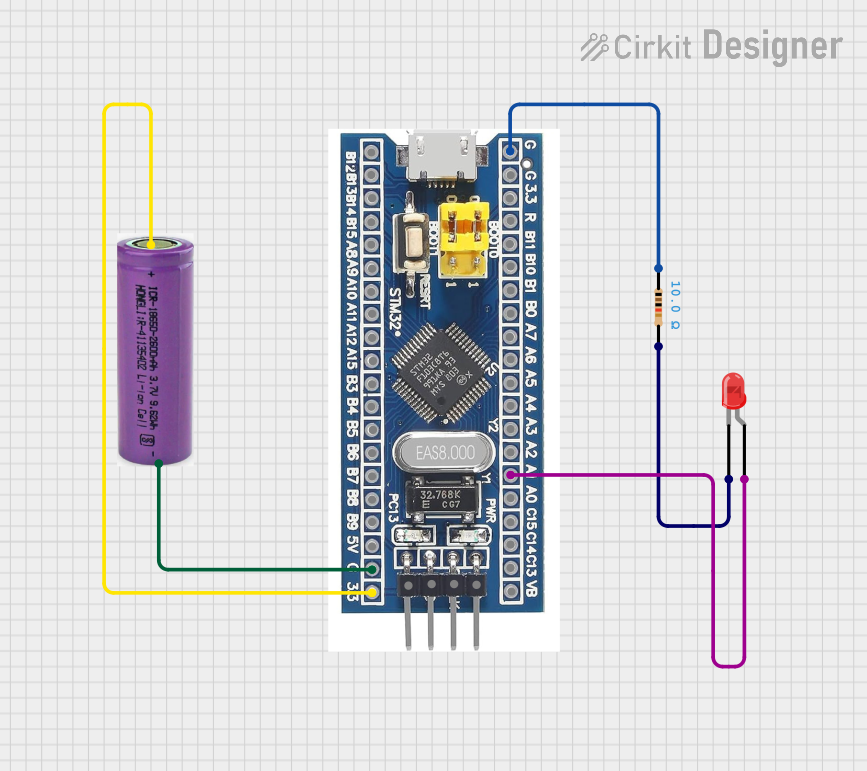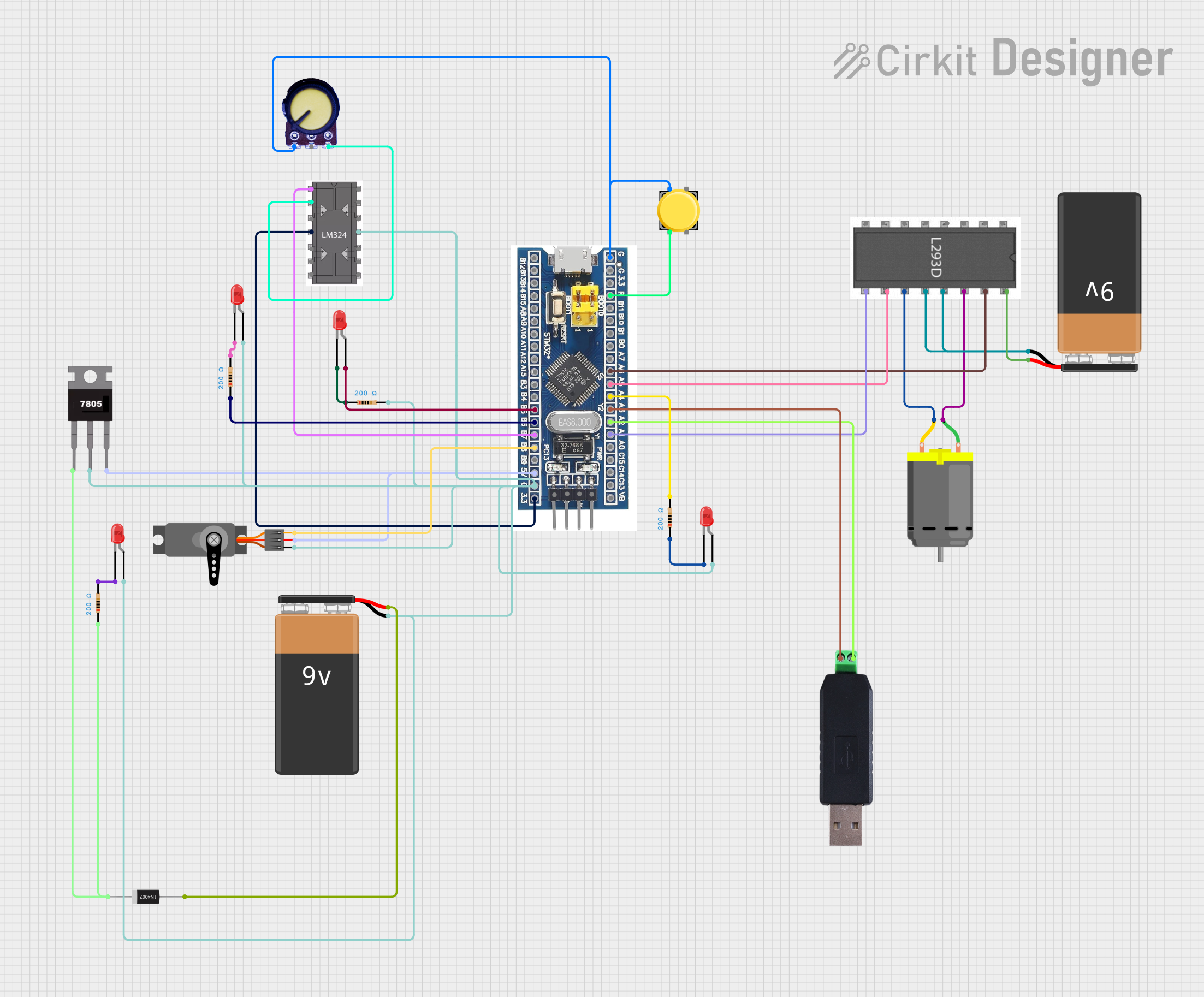
How to Use stm32f401re: Examples, Pinouts, and Specs

 Design with stm32f401re in Cirkit Designer
Design with stm32f401re in Cirkit DesignerIntroduction
The STM32F401RE is a high-performance microcontroller developed by Bala under the STM32 family. It is based on a 32-bit ARM Cortex-M4 core with a clock speed of up to 84 MHz. This microcontroller is designed for a wide range of embedded applications, offering a rich set of peripherals such as ADCs, timers, and communication interfaces (e.g., UART, SPI, I2C). Its compact design and powerful processing capabilities make it ideal for applications in industrial automation, IoT devices, robotics, and consumer electronics.
Explore Projects Built with stm32f401re

 Open Project in Cirkit Designer
Open Project in Cirkit Designer
 Open Project in Cirkit Designer
Open Project in Cirkit Designer
 Open Project in Cirkit Designer
Open Project in Cirkit Designer
 Open Project in Cirkit Designer
Open Project in Cirkit DesignerExplore Projects Built with stm32f401re

 Open Project in Cirkit Designer
Open Project in Cirkit Designer
 Open Project in Cirkit Designer
Open Project in Cirkit Designer
 Open Project in Cirkit Designer
Open Project in Cirkit Designer
 Open Project in Cirkit Designer
Open Project in Cirkit DesignerCommon Applications
- Industrial control systems
- Internet of Things (IoT) devices
- Robotics and motor control
- Wearable devices
- Data acquisition systems
- Consumer electronics
Technical Specifications
The STM32F401RE microcontroller offers the following key technical features:
| Parameter | Value |
|---|---|
| Core | ARM Cortex-M4 |
| Clock Speed | Up to 84 MHz |
| Flash Memory | 512 KB |
| SRAM | 96 KB |
| Operating Voltage | 1.7V to 3.6V |
| GPIO Pins | 50 |
| Communication Interfaces | UART, SPI, I2C, CAN, USB OTG |
| Timers | 16-bit and 32-bit timers |
| ADC | 12-bit, up to 16 channels |
| Package | LQFP64 (64-pin) |
Pin Configuration
The STM32F401RE comes in a 64-pin LQFP package. Below is a table summarizing the key pin functions:
| Pin Name | Pin Number | Description |
|---|---|---|
| VDD | Multiple | Power supply (1.7V to 3.6V) |
| VSS | Multiple | Ground |
| PA0-PA15 | 1-16 | GPIO Port A |
| PB0-PB15 | 17-32 | GPIO Port B |
| PC0-PC15 | 33-48 | GPIO Port C |
| PD0-PD15 | 49-64 | GPIO Port D |
| NRST | 7 | Reset pin |
| BOOT0 | 31 | Boot mode selection |
| USART1_TX | 9 | UART Transmit |
| USART1_RX | 10 | UART Receive |
| SPI1_SCK | 5 | SPI Clock |
| SPI1_MISO | 6 | SPI Master In, Slave Out |
| SPI1_MOSI | 7 | SPI Master Out, Slave In |
For a complete pinout, refer to the official datasheet.
Usage Instructions
Using the STM32F401RE in a Circuit
- Power Supply: Ensure the microcontroller is powered with a voltage between 1.7V and 3.6V. Use decoupling capacitors (e.g., 0.1 µF) near the VDD pins for stable operation.
- Clock Configuration: The STM32F401RE supports internal and external clock sources. For precise timing, connect an external crystal oscillator to the OSC_IN and OSC_OUT pins.
- Reset Circuit: Connect a pull-up resistor (e.g., 10 kΩ) to the NRST pin for proper reset functionality.
- Boot Mode Selection: Use the BOOT0 pin to select the boot mode:
- BOOT0 = 0: Boot from main flash memory.
- BOOT0 = 1: Boot from system memory (e.g., for firmware updates).
- GPIO Configuration: Configure GPIO pins as input, output, or alternate function using the STM32 HAL (Hardware Abstraction Layer) library.
Example: Blinking an LED with Arduino IDE
The STM32F401RE can be programmed using the Arduino IDE with the STM32 core installed. Below is an example code to blink an LED connected to pin PA5:
// Include the STM32 HAL library
#include <Arduino.h>
// Define the LED pin
#define LED_PIN PA5
void setup() {
// Configure the LED pin as an output
pinMode(LED_PIN, OUTPUT);
}
void loop() {
// Turn the LED on
digitalWrite(LED_PIN, HIGH);
delay(500); // Wait for 500 ms
// Turn the LED off
digitalWrite(LED_PIN, LOW);
delay(500); // Wait for 500 ms
}
Important Considerations
- Debugging: Use the SWD (Serial Wire Debug) interface for debugging and programming.
- Power Consumption: Optimize power usage by enabling low-power modes when the microcontroller is idle.
- Peripheral Configuration: Use STM32CubeMX to generate initialization code for peripherals.
Troubleshooting and FAQs
Common Issues
Microcontroller Not Responding
- Cause: Incorrect power supply or missing decoupling capacitors.
- Solution: Verify the power supply voltage and add decoupling capacitors near the VDD pins.
Boot Mode Not Working
- Cause: Incorrect BOOT0 pin configuration.
- Solution: Check the BOOT0 pin connection and ensure it is set to the desired mode.
Communication Interfaces Not Working
- Cause: Incorrect pin configuration or baud rate mismatch.
- Solution: Verify the pin assignments and ensure the baud rate matches the connected device.
LED Not Blinking
- Cause: Incorrect GPIO configuration or wiring.
- Solution: Double-check the pin number and ensure the LED is connected with the correct polarity.
FAQs
Q: Can the STM32F401RE be programmed using USB?
A: Yes, the STM32F401RE supports USB OTG. You can use a USB-to-serial adapter or the built-in USB bootloader for programming.
Q: How do I reduce power consumption?
A: Use low-power modes such as Sleep or Stop mode, and disable unused peripherals.
Q: Can I use the STM32F401RE with an external debugger?
A: Yes, the STM32F401RE supports debugging via the SWD interface. Use tools like ST-Link or J-Link for debugging.
Q: What is the maximum clock speed of the STM32F401RE?
A: The maximum clock speed is 84 MHz.
For further assistance, refer to the official datasheet and reference manual provided by Bala.